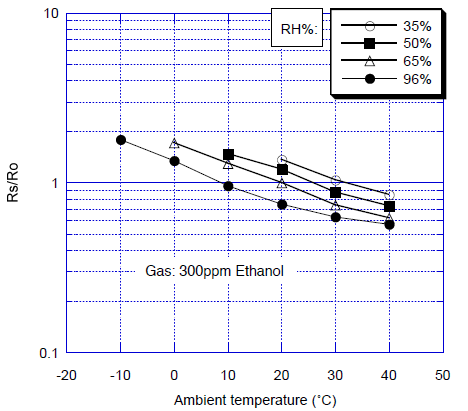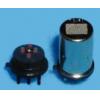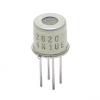Alcohol sensor - TGS2620
Specifications:
1) Target gases : Alcohol, Solvent vapors
2) range:50 ~ 5,000 ppm
3) sensitivity (change ratio of Rs) :0.3 ~ 0.5
4) Circuit Voltage:5.0±0.2V DC/AC
5) Heater Voltage:5.0±0.2V DC/AC
- Model Number: TGS2620
- Quantity:
- - +
Product Specification
Features:
* Low power consumption
* High sensitivity to alcohol and organic
solvent vapors
* Long life and low cost
* Uses simple electrical circuit
Applications:
* Alcohol testers
* Organic vapor detectors/alarms
* Solvent detectors for factories, dry cleaners,and semiconductor industries
The sensing element is comprised of a metal oxide semiconductor layer formed on an alumina substrate of a sensing chip together with an integrated heater. In the presence of a detectable gas, the sensor's conductivity increases depending on the gas concentration in the air. A simple electrical circuit can convert the change in conductivity to an output signal which corresponds to the gas concentration.
The TGS 2620 has high sensitivity to the vapors of organic solvents as well as other volatile vapors, making it suitable for organic vapor detectors/alarms. Due to miniaturization of the sensing chip, TGS 2620 requires a heater current of only 42mA and the device is housed in a standard TO-5 package.
The sensing element is comprised of a metal oxide semiconductor layer formed on an alumina substrate of a sensing chip together with an integrated heater. In the presence of a detectable gas, the sensor's conductivity increases depending on the gas concentration in the air. A simple electrical circuit can convert the change in conductivity to an output signal which corresponds to the gas concentration.
The TGS 2620 has high sensitivity to the vapors of organic solvents as well as other volatile vapors, making it suitable for organic vapor detectors/alarms. Due to miniaturization of the sensing chip, TGS 2620 requires a heater current of only 42mA and the device is housed in a standard TO-5 package.
Sensitivity Characteristics:

The figure below represents typical temperature and humidity dependency characteristics. Again, the Y-axis is indicated as sensor resistance ratio (Rs/Ro), defined as follows:
Rs = Sensor resistance in 300ppm of ethanol at various temperatures/humidities
Ro = Sensor resistance in 300ppm of ethanol at 20°C and 65% R.H.
Temperature/Humidity Dependency:

Specifications
| Target gases | Alcohol, Solvent vapors |
|---|---|
| Typical detection range | 50 - 5,000 ppm |
| Sensing principle | MOS type |
| Driving voltages |
Heater Voltage:5.0V Circuit Voltage:5.0V |
| Power consumption | approx. 210mW |
| Dimensions | φ9.2×7.8mm |
| Weight | Approx. 1.2g |
If you cannot find what you want, you can entrust OFweek to source for you. Just click:
Sourcing ServiceRecommended Products
-

Long life electrochemical oxygen sensor (O2 sensor )
-

Air quality sensor VOC sensor
-

VOC Air quality sensor Formaldehyde sensor
-

Combustible gas sensor Natural Gas sensor TGS2611
-

Flammable gas sensor Liquefied petroleum gas sensor TGS2610
-

Methane and LP Gas sensor
-

Methane and LP Gas sensor
-

Combustible Gases sensor
-

Hydrogen Gas Sensor
-

Methane and Carbon Monoxide Sensor


















